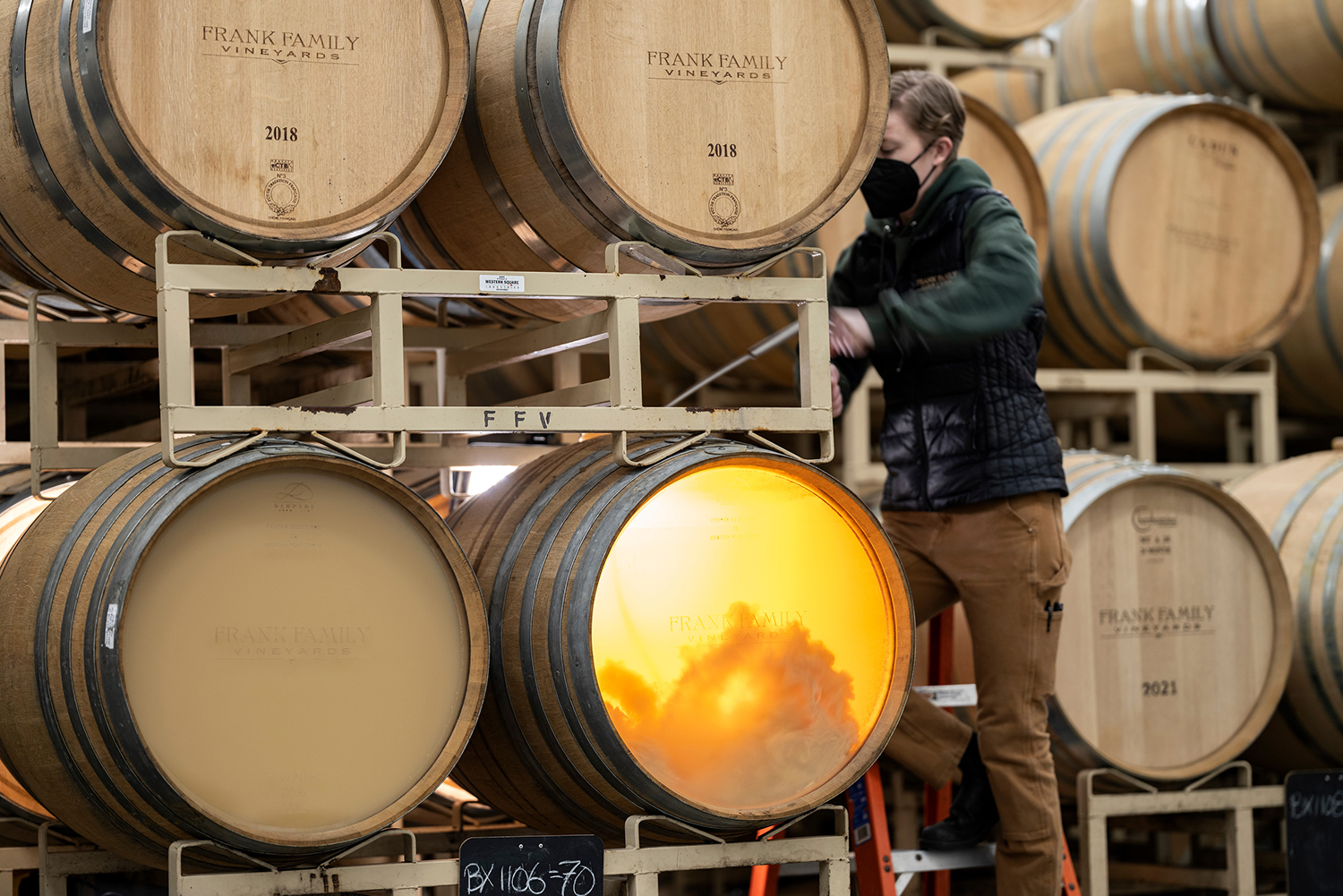Every year, once the Lewis Vineyard Chardonnay and Carneros Chardonnay are in our French oak barrels, our winemaking team spends months hand stirring each individual barrel in a process called bâtonnage. This old-world winemaking technique is extremely important for our Chardonnays as they are aged sur lie, French for “on the lees.” Aged sur lie is a process in which the wine is in constant contact with lees adding additional flavors and aromas into the final product.

What are lees?
Lees are mostly composed of dead yeast cells and are the sediment of winemaking and a byproduct of fermentation. One important benefit of lees is that they absorb oxygen, thus helping prevent oxidation in the wine. As the wine ages, the lees decompose and release sugars and proteins into the wine. The proteins released combine with the tannins which softens the overall mouthfeel of our Chardonnay. In addition to a softer mouthfeel, aging wine on the lees adds texture, weight, and balance to the final product.

What is Bâtonnage?
Aging wine sur lie is a precise technique that requires careful watch. If the lees are left undisturbed for a long period of time, they can create undesirable aromas. To prevent this, our winemaking team employs the intricate practice of bâtonnage, also known as lees stirring.
Bâtonnage allows our winemaking team to ensure the wine has constant contact with the lees. Using a long, stainless steel baton fed through the barrel’s bung-hole, we careful stir the settled lees from the bottom of the wine barrel back into the wine, a process that takes approximately eight to ten seconds per barrel.

At Frank Family, we apply a hybrid model in which we periodically stir only our Chardonnays about every two to four weeks. We stop stirring after the wines have completed malolactic fermentation, a process in which the wines become softer, rounder, and more complex. While stirring stops at this point, the sur lie continues for a total of nine to ten months. Each Chardonnay barrel is then racked for blending in late spring to early summer before bottling.
While bâtonnage requires additional time and attention in the cellar, the effect it has on our Chardonnays is certainly worth it. Next time you enjoy a bottle of Frank Family Chardonnay look for an extra layer of yeasty characteristics like brioche and feel the fuller body and richness on your palate, a complexity amplified thanks to the thoughtful application of this old-world winemaking technique.








